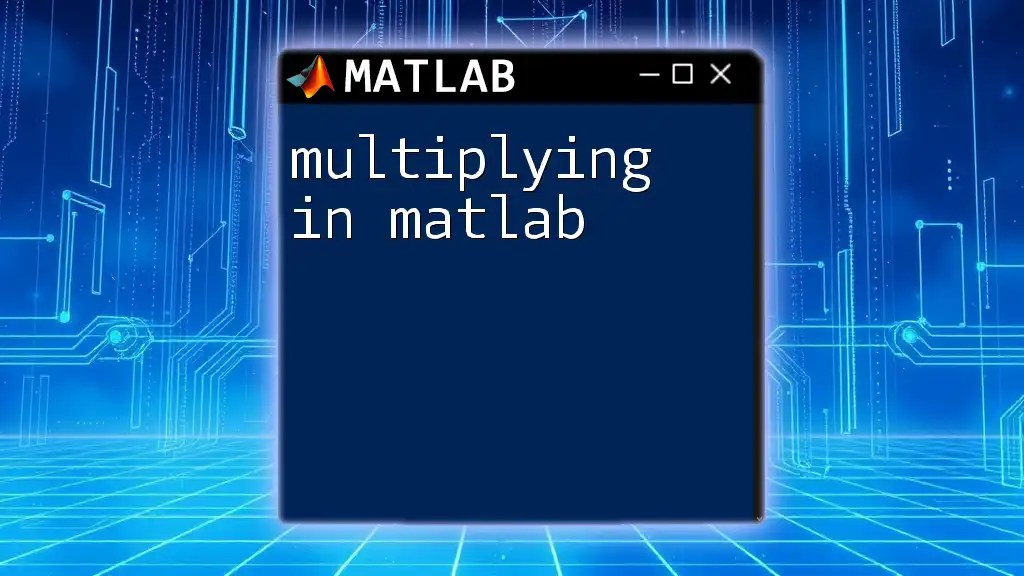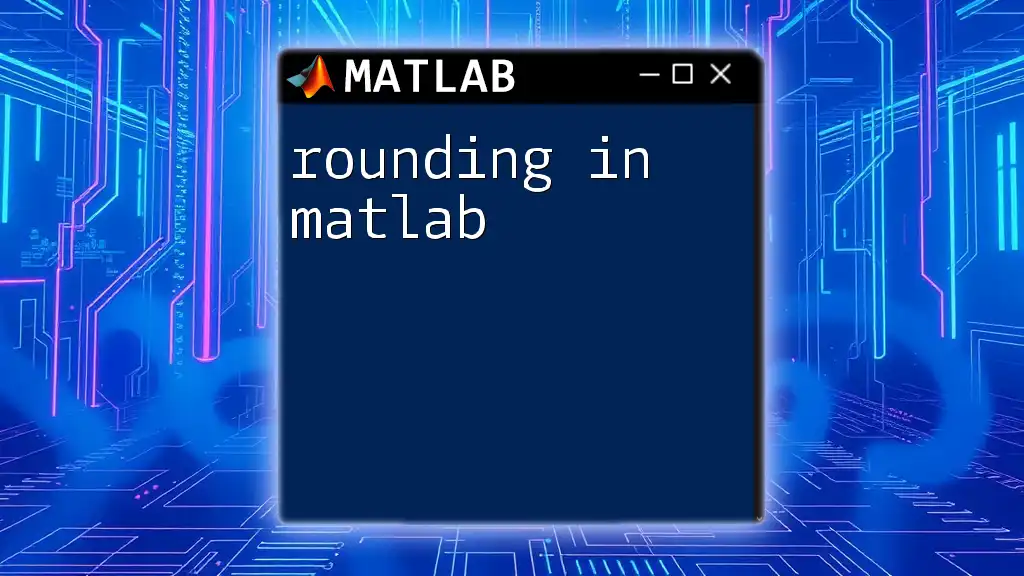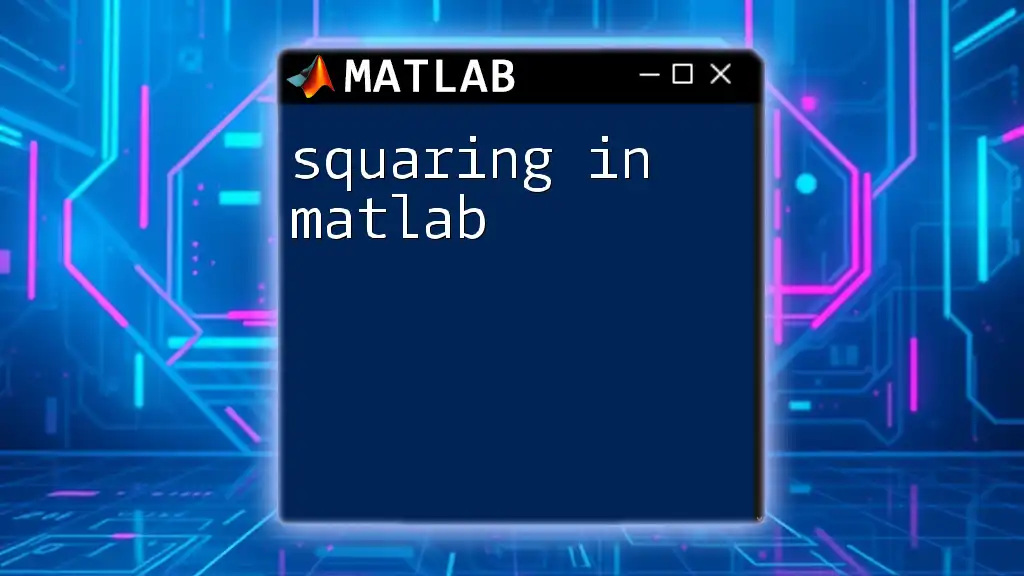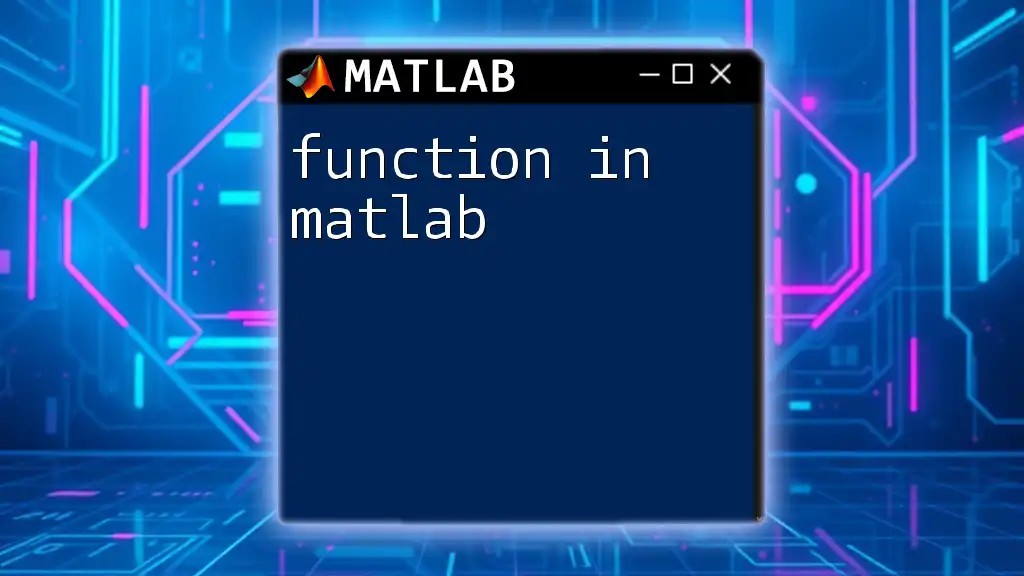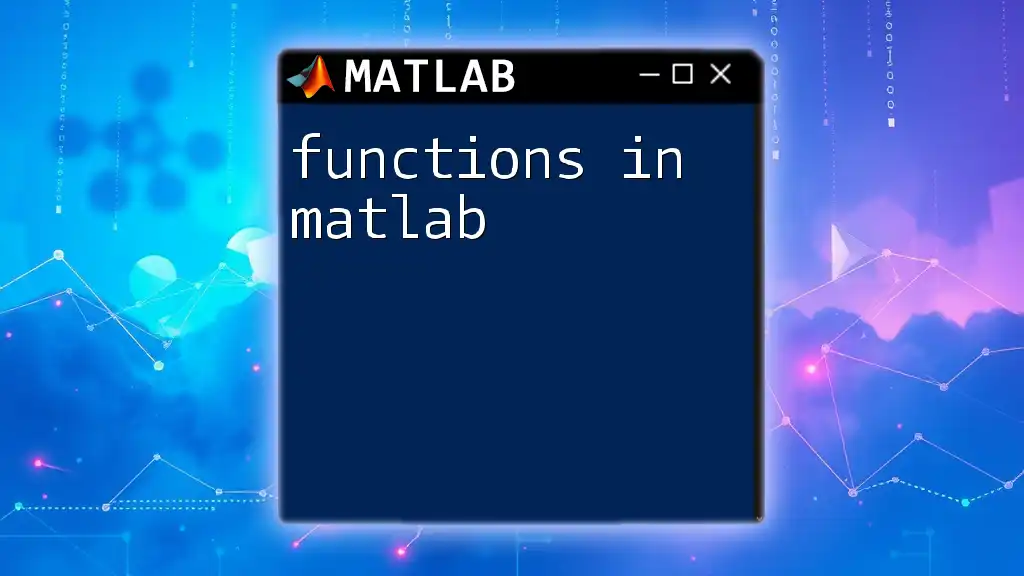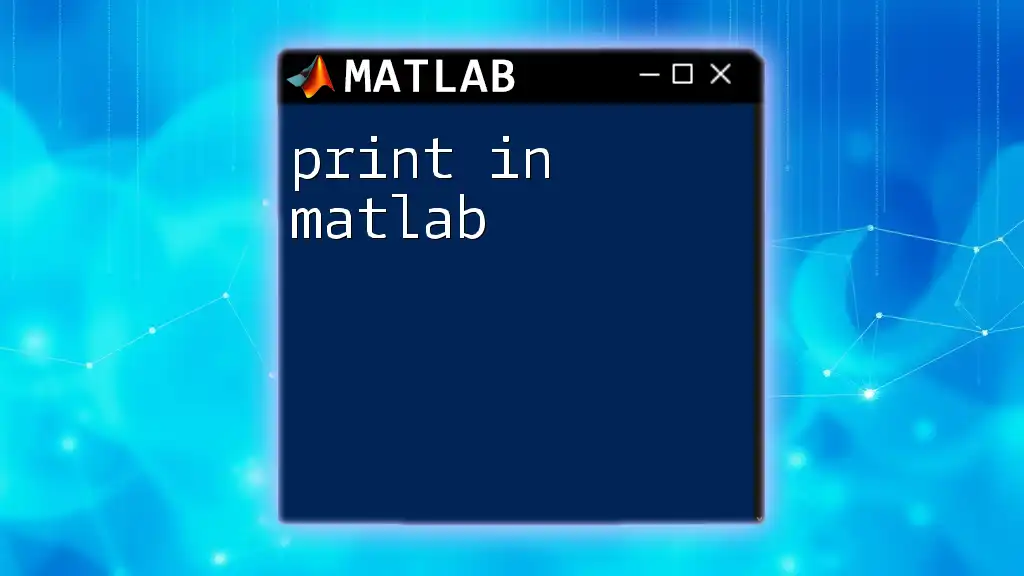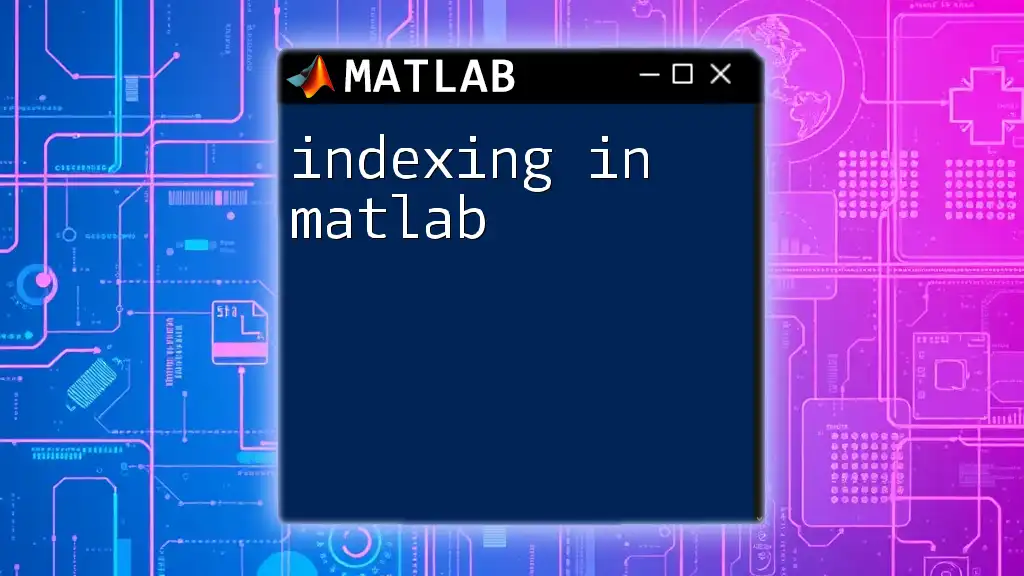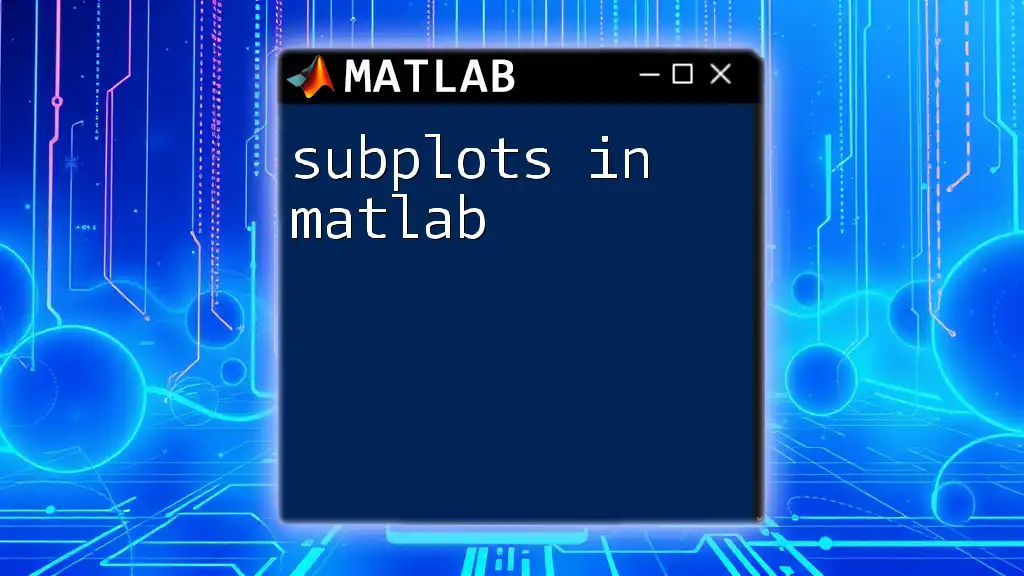In MATLAB, you can multiply matrices and arrays using the `` operator for matrix multiplication or the `.` operator for element-wise multiplication, depending on your needs.
Here's a quick example of each:
% Matrix Multiplication
A = [1, 2; 3, 4];
B = [5; 6];
C = A * B; % Result is a matrix
% Element-wise Multiplication
X = [1, 2, 3];
Y = [4, 5, 6];
Z = X .* Y; % Result is [4, 10, 18]
Understanding Multiplication in MATLAB
Overview of Basic Multiplication
In MATLAB, multiplication is a fundamental operation that can serve various purposes, from solving equations to processing data. The primary mathematical operations are executed using operators. For multiplication, MATLAB provides two distinct operators:
- Matrix multiplication is performed using the asterisk (`*`).
- Element-wise multiplication is done using the dot-asterisk (`.*`).
This distinction is essential for writing efficient MATLAB code and understanding the results returned by operations. The basic syntax for these operations is as follows:
C = A * B % For matrix multiplication
C = A .* B % For element-wise multiplication
Difference Between Matrix and Element-wise Multiplication
Matrix Multiplication: This method follows the rules of linear algebra. Specifically, two matrices can be multiplied only when the number of columns in the first matrix matches the number of rows in the second matrix. If we have matrices A of size `(m x n)` and B of size `(n x p)`, the resulting matrix C will have the size `(m x p)`.
To illustrate with an example:
A = [1, 2; 3, 4];
B = [5; 6];
C = A * B; % Result: [17; 39]
Element-wise Multiplication allows direct multiplication of matrices or arrays of the same size, where each element in one matrix is multiplied by the corresponding element in the other. The following code demonstrates this:
A = [1, 2; 3, 4];
B = [5, 6; 7, 8];
C = A .* B; % Result: [5, 12; 21, 32]
Here, each value in A is multiplied individually by the corresponding value in B.

Performing Multiplication in MATLAB
Basic Matrix Multiplication
Matrix multiplication is a common task and is crucial for many mathematical computations in MATLAB. As mentioned earlier, the operation can be performed using the asterisk (`*`).
Consider this code snippet:
A = [1, 2; 3, 4];
B = [5; 6];
C = A * B; % Result: [17; 39]
In this operation, MATLAB multiplies the rows of A by the columns of B. The inner dimensions (2 from A and 2 from B) must match for the multiplication to proceed. The result, C, will have a dimension derived from the outer dimensions of the two matrices (2 x 1).
Element-wise Multiplication
When you need to work with arrays, element-wise multiplication with the `.*` operator comes into play. The following example illustrates this:
A = [1, 2; 3, 4];
B = [5, 6; 7, 8];
C = A .* B; % Result: [5, 12; 21, 32]
In the above example, every element in A is multiplied by the corresponding element in B. This method is particularly useful in applications involving data arrays where operations need to be performed element by element.
Working with Complex Numbers
MATLAB excels at handling complex numbers, including during multiplication. Complex multiplication follows standard mathematical rules.
Here's an example that demonstrates this:
z1 = 3 + 4i;
z2 = 1 - 2i;
z3 = z1 * z2; % Result: [11 - 10i]
In this instance, the real parts and imaginary parts are multiplied separately, showcasing MATLAB's capability to manage complex arithmetic seamlessly.

Advanced Multiplication Topics
Multiplying Arrays with Different Sizes
When multiplying arrays, it’s crucial to understand the size compatibility rules. For instance, attempting to perform matrix multiplication on arrays with incompatible sizes will result in an error. Here’s an example that produces an error due to dimension mismatch:
A = [1, 2; 3, 4];
B = [5, 6];
C = A * B; % Error due to incompatible dimensions
To avoid such issues, always check that the number of columns in the first array matches the number of rows in the second array.
Using the `times` Function for Element-wise Multiplication
MATLAB also provides the `times` function explicitly designed for element-wise multiplication. It works the same as using the dot-asterisk operator but can be more readable in code. Here’s how you can use it:
A = [1, 2; 3, 4];
B = [5, 6; 7, 8];
C = times(A, B); % Equivalent to A .* B
The result will be the same, but using `times` can enhance clarity in complex operations or lengthy scripts.
Sparse Matrices in Multiplication
For scenarios involving large matrices, MATLAB allows the creation of sparse matrices, which save memory by only storing non-zero values. Multiplying sparse matrices follows the same basic principles but is optimized for efficiency. Here’s an example:
SA = sparse([1, 3], [1, 3], [1, 4]);
SB = sparse([1, 2], [2, 3], [3, 5]);
SC = SA * SB; % Result will also be a sparse matrix
This approach significantly reduces computational load when dealing with huge datasets, making it an advantageous method when working with sparse data structures.

Common Pitfalls and Troubleshooting
Error Messages Related to Multiplication
Several common errors can arise during multiplication:
- Dimension mismatch: This occurs when the inner dimensions do not match for matrix multiplication. MATLAB will return an informative error message guiding you to check dimensions.
- Use of incorrect operators: For instance, using `` instead of `.` when you intend to perform element-wise multiplication can lead to confusion or incorrect results.
Optimizing Performance in Large Matrix Multiplications
When faced with large matrices, performance optimization becomes crucial. Here are several tips:
- Use built-in functions and matrix properties (like sparsity) whenever possible.
- Choose the appropriate multiplication method (`` for matrix multiplication and `.` for element-wise) to avoid unnecessary overhead.
- Preallocate matrices for storage whenever you're generating large datasets to speed up operations.
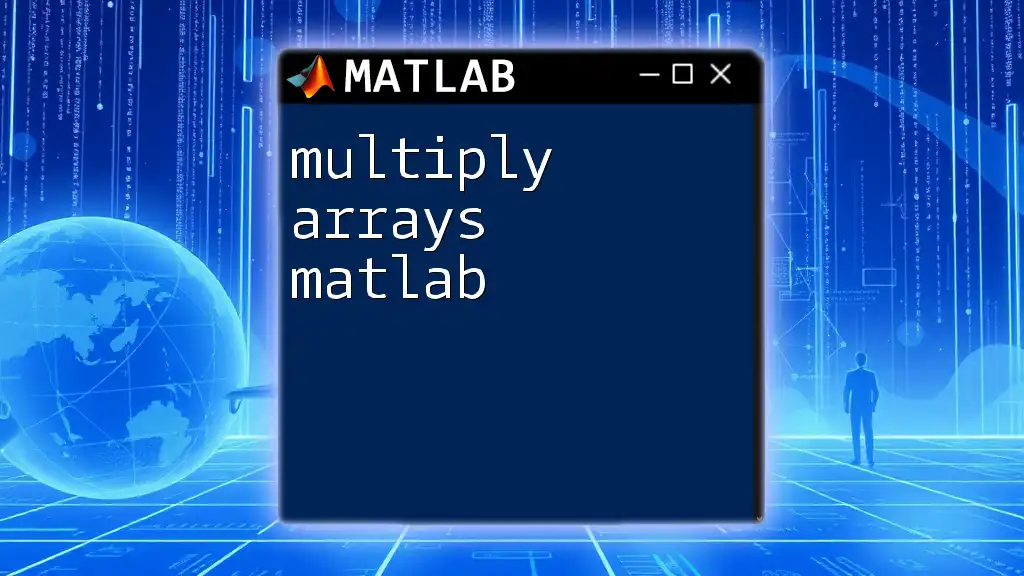
Conclusion
Mastering the concept of multiplying in MATLAB is invaluable for anyone engaged in mathematical computations, engineering simulations, or data analysis. Understanding the differences between matrix and element-wise multiplication, along with effective coding practices, can significantly enhance your programming proficiency in MATLAB. As you continue to explore and practice these operations, you will find an increased ability to manipulate arrays, perform complex calculations, and develop efficient algorithms.

Additional Resources
For further enlightenment and practice, consider exploring MATLAB's official documentation on multiplication operations. Additional tutorials and courses will deepen your understanding of what MATLAB can accomplish in terms of mathematical computations.

